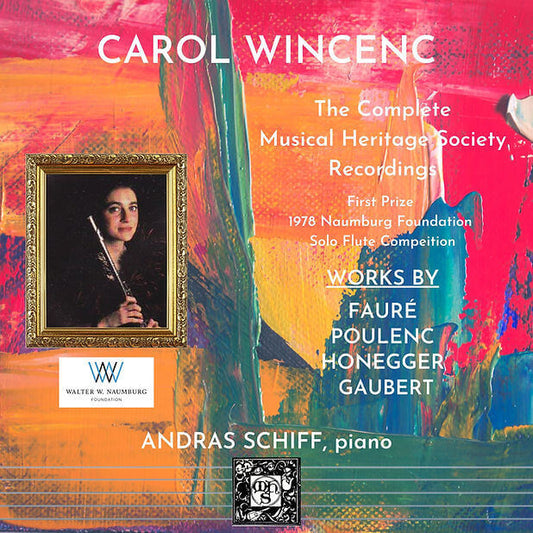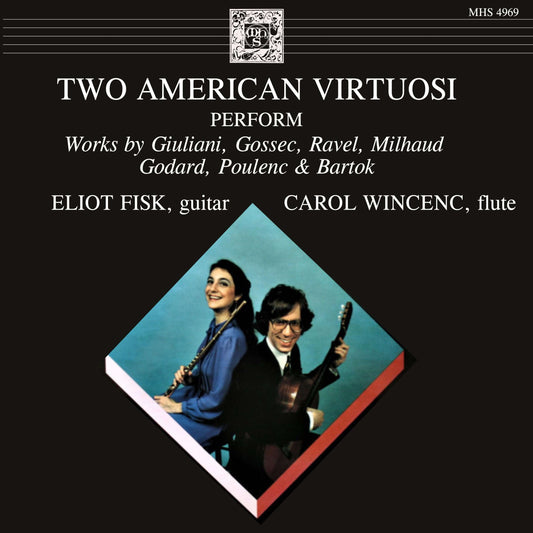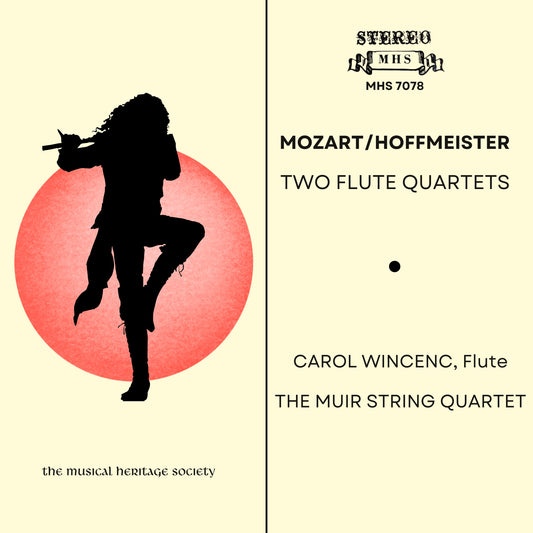1
/
of
1
CAROL WINCENC: THE MUSICAL HERITAGE SOCIETY RECORDINGS
MOZART & HOFFMEISTER: TWO FLUTE QUARTETS - Carol Wincenc, The Muir String Quartet
MOZART & HOFFMEISTER: TWO FLUTE QUARTETS - Carol Wincenc, The Muir String Quartet
Regular price
$9.99
Regular price
$9.99
Sale price
$9.99
Unit price
/
per
$5.00
MHS
DIGITAL DOWNLOAD with LINER NOTES
play_circle_outline
Flute Quartet in G Major: I. Allegro (After Wolfgang Amadeus Mozart's Piano Sonata No. 15 in F Major, KV 533/494)
8:53
add_shopping_cart
$0.99
play_circle_outline
Flute Quartet in G Major: II. Andante (After Wolfgang Amadeus Mozart's Piano Sonata No. 15 in F Major, KV 533/494)
6:43
add_shopping_cart
$0.99
play_circle_outline
Flute Quartet in G Major: III. Rondo. Allegretto (After Wolfgang Amadeus Mozart's Piano Sonata No. 15 in F Major, KV 533/494)
6:20
add_shopping_cart
$0.99
play_circle_outline
Flute Quartet in C Major: I. Allegro con spirito (After Wolfgang Amadeus Mozart's Piano Sonata No. 7 in C Major, K. 309)
6:22
add_shopping_cart
$0.99
play_circle_outline
Flute Quartet in C Major: II. Andante un poco adagio (After Wolfgang Amadeus Mozart's Piano Sonata No. 7 in C Major, K. 309)
6:16
add_shopping_cart
$0.99
play_circle_outline
Flute Quartet in C Major: III. Rondo. Allegretto grazioso (After Wolfgang Amadeus Mozart's Piano Sonata No. 7 in C Major, K. 309)
6:11
add_shopping_cart
$0.99
My initial reaction to performing transcriptions of the beautifully pianistic works of Mozart was a mixture of enthusiasm and skepticism, but I soon became convinced of their validity in the arrangements by Hoffmeister. I was curious, however, how Hoffmeister dealt with Mozart's original scores, and so began comparing. To my surprise, Hoffmeister had rewritten some eminently playable passages in Mozart's original, probably for what he considered a more technical display. I have restored some of these passages in our present version (affecting predominantly the flute parts), as well as changing some doublings in the string parts. The point of departure was not to imitate the piano (an obvious temptation when dealing with choices of coloring, articulation, and dynamic variation), but rather to allow Mozart's music to be experienced in a setting for which he also wrote his ever-popular flute quartets: K. 285, K. 285a, K. 285b, and K. 298. We now have two pieces which stand independently and convincingly, not merely as transcriptions, but as "new" works of Mozart for flute and strings. Carol Wincenc
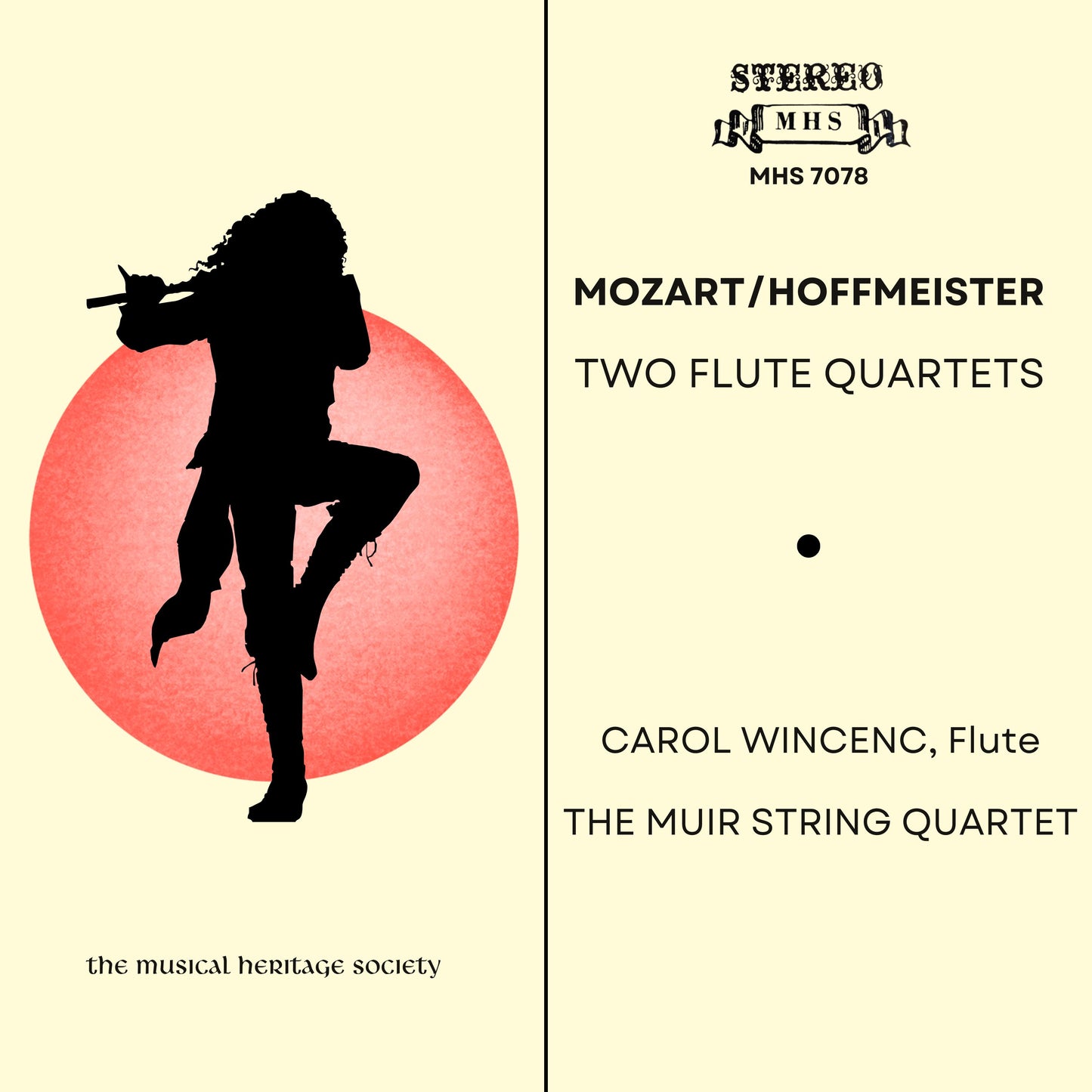

Performers
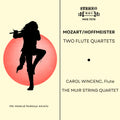
00:00
/
00:00
•
skip_previous
play_circle_outline
pause_circle_outline
skip_next
Also Available from CAROL WINCENC: THE MUSICAL HERITAGE SOCIETY RECORDINGS
-
STREAMING
Carol Wincenc & Andras Schiff: The Complete Musical Herit...
ExploreRegular price $0.00Regular priceUnit price / per -
STREAMING
Carol Wincenc & Eliot Fisk: Two American Virtuosi
ExploreRegular price $0.00Regular priceUnit price / per -
Members Save 50% DIGITAL DOWNLOAD with LINER NOTES
MOZART & HOFFMEISTER: TWO FLUTE QUARTETS - Carol Wincenc,...
ExploreRegular price $9.99Regular priceUnit price / per$9.99Sale price $9.99


